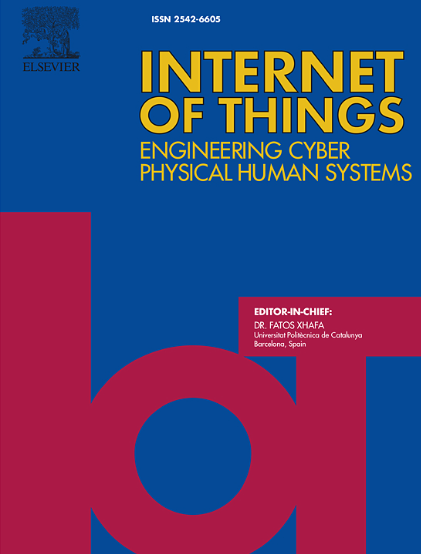利用室内轨迹数据对工人活动进行分类的分层半监督方法
IF 6
3区 计算机科学
Q1 COMPUTER SCIENCE, INFORMATION SYSTEMS
引用次数: 0
摘要
活动识别是指根据不同传感设备捕获的数据自动识别或解释物体活动的过程。以往有关室内活动识别的研究主要依赖于图像或视频记录等可视数据,而我们提出了一种基于物联网传感器记录的时空轨迹数据的新方法。所提出的方法利用轨迹分割、分层聚类和卷积神经网络,专为室内制造应用而量身定制。此外,在不同工业环境中使用的绝大多数活动识别模型都是有监督的方法,需要收集大量人工标注的数据集。这种人工标注过程既不方便又耗费人力,因此在实际应用中往往不可行。相比之下,我们提出的活动识别方法是半监督式的,这意味着它可以使用更少的标注数据进行训练,从而大大减少了与人工标注过程相关的工作量和成本。我们使用两个与不同制造装配流程相关的室内轨迹数据集对所提出的方法进行了评估。实验结果证明了该方法在活动识别方面的有效性:室内轨迹数据集的分类准确率(使用 F 分数衡量)介于 0.81 到 0.95 和 0.88 到 0.92 之间。与基线模型的比较表明,该模型的分类准确率提高了 18%。此外,分类结果还有助于深入了解工厂车间状态,为提高运营效率和分配资源提供决策依据。本文章由计算机程序翻译,如有差异,请以英文原文为准。
Hierarchical Semi-Supervised Approach for Classifying Activities of Workers Utilising Indoor Trajectory Data
Activity recognition refers to the process of automatically identifying or interpreting activities of objects based on the data captured from different sensing devices. While previous research on indoor activity recognition predominantly relies on visual data like images or video recordings, we present a novel approach based on spatiotemporal trajectory data recorded by IoT based sensors. The proposed approach is tailored for indoor manufacturing applications leveraging trajectory partitioning, hierarchical clustering, and convolutional neural networks. Moreover, a vast majority of activity recognition models that have been used in different industrial settings are supervised methods requiring large manually labelled datasets to be collected. This manual annotation process is unwieldly and labour-intensive, and hence, often infeasible to deploy for practical applications. In contrast, our proposed activity recognition approach is semi-supervised meaning it can be trained with far less labelled data; significantly reducing the effort and costs associated with the manual annotation process. The proposed approach is evaluated using two indoor trajectory datasets related to different manufacturing assembly processes. Experimental results demonstrate its effectiveness for activity recognition: the classification accuracy (measured using F-score) varies between 0.81 to 0.95 and 0.88 to 0.92 across indoor trajectory datasets. A comparison with a baseline model indicates that it achieves up to a 18% improvement in classification accuracy. Furthermore, the classification results enable insights into factory floor states, aiding in decision-making for operational efficiency and resource allocation.
求助全文
通过发布文献求助,成功后即可免费获取论文全文。
去求助
来源期刊

Internet of Things
Multiple-
CiteScore
3.60
自引率
5.10%
发文量
115
审稿时长
37 days
期刊介绍:
Internet of Things; Engineering Cyber Physical Human Systems is a comprehensive journal encouraging cross collaboration between researchers, engineers and practitioners in the field of IoT & Cyber Physical Human Systems. The journal offers a unique platform to exchange scientific information on the entire breadth of technology, science, and societal applications of the IoT.
The journal will place a high priority on timely publication, and provide a home for high quality.
Furthermore, IOT is interested in publishing topical Special Issues on any aspect of IOT.
 求助内容:
求助内容: 应助结果提醒方式:
应助结果提醒方式:


